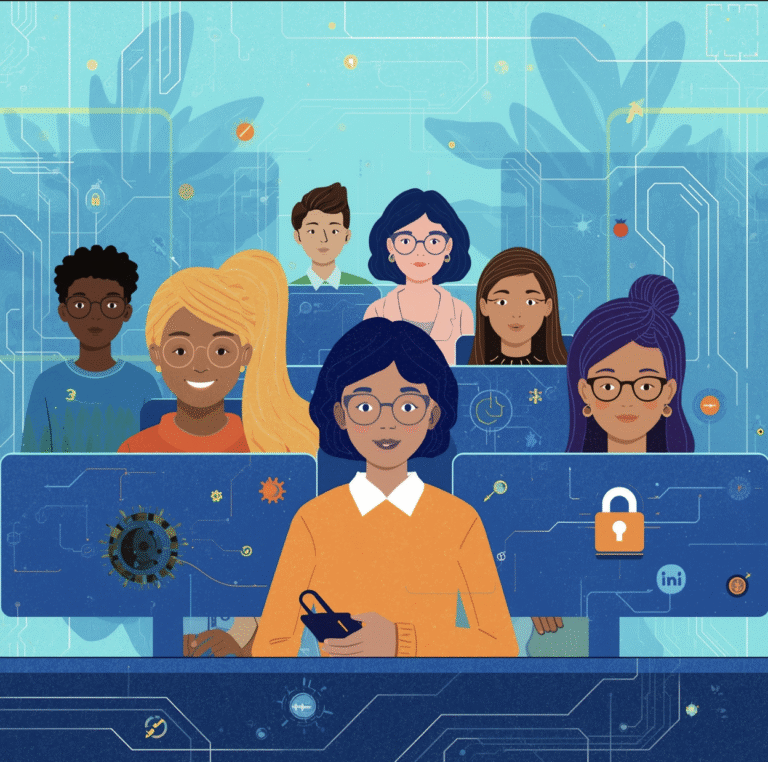Common Challenges in AI Chatbot Development and How to Overcome Them
Learn the top challenges in AI chatbot development and how to overcome them. Discover solutions for intent recognition, conversation flow, scalability, and more.
Business organizations use AI chatbots as essential assets to improve customer experience and operational management and maximize operational efficiency. The deployment of automated interactions through chatbots allows immediate support as well as valuable insights collection and transaction features integration. Implementing an effective AI chatbot demands a solution to various challenges during development and deployment. The blog provides solutions for typical development issues in AI chatbots and presents practical examples with applicable remedies.
- Grasping User Intent Accurately
Every chatbot requires accurate comprehension of user intentions to achieve success. In situations where users express themselves through diverse language forms, a chatbot that fails to identify their actual meaning will drive users toward frustration while pushing them away.
Example: IBM Watson Assistant
An IBM Watson Assistant chatbot for customer service had difficulties understanding local dialects and specialized terminology. The company increased their custom AI chatbot’s customer satisfaction by enabling a sophisticated natural language processing system to handle query analysis and classification to better understand user intent. This AI bot development case study illustrates how proper NLP implementation matters with respect to building an AI chatbot.
Solution:
- A system of advanced Natural Language Processing techniques should be deployed to enable the artificial intelligence to interpret various language expressions and specialized terminology through continuous learning frameworks.
- A program should receive constant knowledge updates through the implementation of real user interactions. This enables better response handling and identification of common misunderstandings. The process allows fine adjustments of responses along with identifying frequently occurring misunderstandings from users.
A business can develop custom AI chatbots that create both meaningful and accurate user interaction by concentrating on these areas.
- Navigating Conversation Flow
Users anticipate chatbots to lead dynamic, unstructured interactions because these systems function differently from standard, structured interactions. The failure of chatbots to sustain smooth dialogue leads to serious deterioration of user satisfaction.
Example: Nordstrom’s Visual Stylist
Using a web-based Nordstrom visual stylist chatbot, retailers provide visitors with help for a fashion question or product inquiry. The chat’s original structured design path created navigation issues when the users became lost and strayed from a standard path. After collaborating with an AI chatbot development company, Nordstrom improved the user experience with a flexible redesign of the conversation structure, showing the value of professional chatbot development services.
Solution:
- The chatbot requires state management, which enables it to remember prior interactions while keeping dialogue context intact during whole conversations.
- The chatbot system should receive dynamic flow design features to let users guide responses through their behavior and topic changes, which creates a smoother dialogue experience.
Both methods will improve user interactions with chat interfaces.
- Integrating with Existing Systems
Well-functioning chatbots need to connect easily with older business systems that include Customer Relationship Management (CRM) platforms and databases and other business applications. The overall effectiveness of a chatbot will suffer when it lacks proper system integration, which results in operational disturbances.
Example: Domino’s Pizza Ordering Assistant
Domino’s Pizza created a bot system to function at the front end of their ordering system. The company faced a number of challenges when adding new systems due to the fact that their legacy platforms functioned based on old architectural designs. After working with a developer of modern solutions, the company was able to deliver a seamless order system connecting users with their ai chatbot, highlighting the value of a professional chatbot service.
Solution:
- A modular architecture should serve as the foundation to develop chatbots which link rapidly to various platforms and databases.
- The use of APIs will enable seamless communication between existing systems and the chatbot which provides necessary data during user interactions.
- Managing Complex Queries
The functionality of chatbots reaches its limits as customers submit multi-stage inquiries requiring complex knowledge because they were initially developed for basic requests.
Example: Microsoft Teams Bot
The built-in bot system within Microsoft Teams supports users by assisting them with self-discovery of an application and coordination with their team members. Although the custom AI bot was put in place, when it went live, it would not work properly due to the number of questions from customers exceeding its initial scope. The complexity behind Microsoft’s implementation of a multi-tier complex query management system improved execution in combination with improved user satisfaction levels for the AI chatbot solutions.
Solution:
- Basic information-related inquiries should use rule-based systems yet the system needs AI-powered capabilities to address complex questions.
- The chatbot should direct unresolvable user requests toward a guided path toward a human agent for assistance.
The approach minimizes overwhelming experiences of complex inquiries which leads users to have better interaction with the system.
- Achieving Scalability
The expansion of a business demands increased user contact processing from its chatbot with no reduction in operational speed. Service interruptions as well as sluggish performance will occur as a result of inadequate scalability.
Example: Ulta Beauty’s Virtual Beauty Advisor
As many users engaged it, the virtual beauty consultation gained traction during promotional events. The company handled its growth noisily by moving its bot to cloud computing and plugging in global intelligence analytics that leveraged current usage patterns and used these to automatically tweak resource allocation when faced with high query volumes to keep service delivery uninterrupted. It illustrates how the best conversational AI companies think about scalability.
Solution:
- A business can benefit from cloud-based services since these solutions offer automatic resource adjustments that allow elastic scalability to meet changing customer demands.
To improve backend processing efficiency, the system needs optimization because it will boost data management speed.
Businesses working with AI chatbot solution providers protect their chatbots by focusing on scalability because this prevents performance degradation from affecting the system when user demand changes.
- Cultural Sensitivity and Language Adaptation
Global organizations require their chatbots to provide translation features along with cultural insights to effectively communicate with users who speak various languages. Users will feel alienated when dialogue communication between a chatbot and a user ends in misinterpretation.
Example: Duolingo
Thanks to Duolingo’s AI solutions, users are no longer limited to a world in which they only communicate within their native language. Duolingo’s technical chatbots perform two functions related to translation that customize messaging so it is relevant to users while still adding a contextual and cultural literacy of local audiences. Users realize more successful experiences on a global platform due to the cultural literacy of the content, which highlights the significance of cultural adaptation in custom ai chatbots.
Solution:
- Native speakers representing different backgrounds need to partake in organization development projects to secure precise translations combined with cultural adaptation services.
- The development of better communication methods requires testing on different demographic groups with specific attention to detail.
The combination of cultural competence with language fluency allows organizations that partner with top conversational AI companies to achieve higher worldwide user engagement and satisfaction.
Summary of Key Challenges and Solutions:
| Challenge | Solution |
| 1. Grasping User Intent Accurately | Deploy advanced NLP techniques The system needs to learn from genuine user interactions, which run as an ongoing process. The system needs to focus on developing meaningful communications that are also accurate between users. |
| 2. Navigating Conversation Flow | Users should analyze their behavioral indicators to automatically adjust the conversational flow. Allow for flexible topic changes |
| 3. Integrating with Existing Systems | The system relies on modular architecture that accelerates system integration procedures. A smooth system operation requires the deployment of Application Programming Interfaces that will support communication between different systems. |
| 4. Managing Complex Queries | · Rule-based systems should handle easy inquiries while Artificial Intelligence technologies should take over difficult challenges at the organization. Human assistance needs to be accessible for particular situations. Human operators need to remain accessible during operational need. · Clients should follow structured pathways that direct them to speak with human staff assistants when particular situations arise. |
| 5. Achieving Scalability | · Automated cloud-based services along with resource adjustment capabilities should be used to optimize backend data management efficiency. |
| 6. Cultural Sensitivity and Language Adaptation Include native speakers in development | · Include native speakers in development · Tests with diverse demographic groups · According to Naenkam (2017) cultural competence should merge with language proficiency skills when designing effective patient education materials. |
Conclusion
Organizations that implement suitable processes alongside a proactive approach toward action execution will have the best chances to reach their success goals. Every step in developing AI chatbots demands focused optimization because good data management, scalable solutions, and user intention understanding must be achieved throughout the process.
AI chatbot development services providers should apply flexible operating approaches to deal with fundamental challenges effectively. Through their expertise in advanced technologies, leading AI providers enable organizations to create chatbots that accomplish superior results than customary customer expectations. Gaining skilled resources to develop an effective chatbot system leads to improved business expansion while boosting operational quality and user satisfaction.
The AI Chatbot Development Specialist: TenUp will support your business needs
The development team at Tenup Custom dedicates its software developers to address sophisticated challenges in AI chatbot creation. The Tenup experts develop customized, tailored developer solutions that integrate into existing business platforms to tackle the mentioned problems. The system built by our employee utilizes complex NLP solutions to interpret user meaning, which makes it possible to create simple dialogue paths and implement safe security measures in adaptable business systems supporting your organization’s growth. TENUP delivers solutions by implementing its detailed AI chatbot development plan that bridges customer fulfillment with financial success and stronger service quality and enhanced operational performance. The Tenup solution applies proven functioning mechanics to build exceptional chatbots through technical expertise and deep business understanding, therefore driving quantitative business value advancement. If you need proper deployment of your business needs contact Tenup for immediate access to their AI chatbot solution.
Based on the blog content about AI chatbot development challenges and solutions, here are 3-4 frequently asked questions (FAQs) that would work well at the end of the article:
Frequently Asked Questions
Q1: How long does it typically take to develop a custom AI chatbot?
When creating personal AI chatbots, development requires between two months and four months, depending on the solution’s complexity. The time required for creating custom AI chatbot solutions depends on project complexity, so development usually requires 2-4 months to move from planning stages to deployment. Programs consisting of just simple chatbots with basic functionality reach completion in 4-6 weeks, but advanced solutions spanning NLP,
multiple integrations, and thorough testing require 6 months or more. Our team at TenUp gives you specific timeframe predictions for your project development during the discovery process.
Q2: What’s the difference between rule-based chatbots and AI-powered chatbots?
Rule-based chatbots operate through different functions from AI-powered chatbots since their modes of operation differ. Shape-based chatbots follow set paths through prepared command and keyword responses to resolve simple questions. The capability of AI-powered chatbots to learn knowledge stems from their natural language processing and machine learning system that extracts relevant text context from conversations. Business solutions improve organization performance through two operational components, including a rule-based system for basic inquiries and AI capability for complex user interactions.
Q3: How can we measure the ROI of implementing an AI chatbot for our business?
AI chatbot performance reflects its ROI by tracking multiple essential metrics, including decreased customer service expenses along with better conversion outcomes, faster customer resolutions, and better customer satisfaction reports, as well as lower employee operational requirements. Before implementation, TenUp assists clients to create baseline measurements, which the company then monitors using interactive analytics dashboards to track performance enhancements that show precise business outcomes.
Q4: What ongoing maintenance does an AI chatbot require after deployment?
The upkeep of efficient AI chatbots includes performance observation along with conversation evaluation for development spots as well as knowledge base modernization and makeover of NLP models using novel data and technical adjustments for system security and application integration. The maintenance packages offered by TenUp address all needs related to improving your chatbot which results in continued value delivery post-deployment.






See a Live Demo in Action
Join top institutions using Proctor 365 to simplify, secure, and scale their digital assessments.



